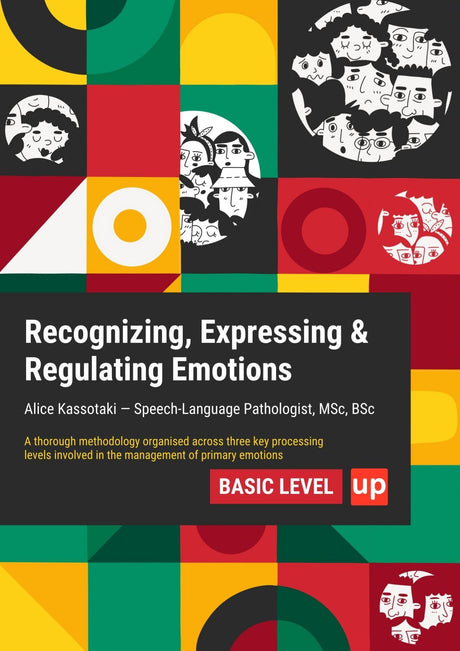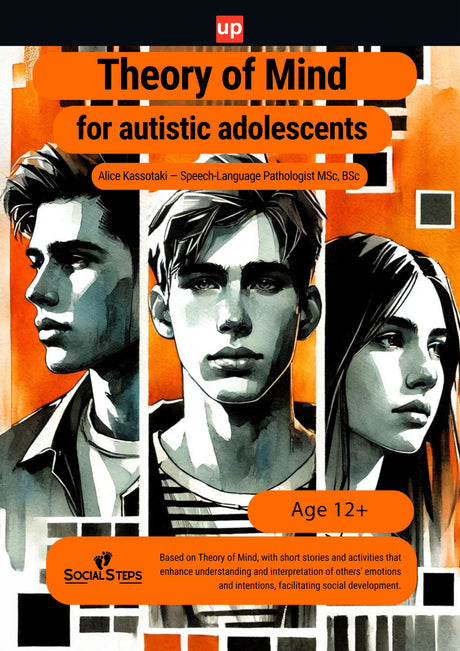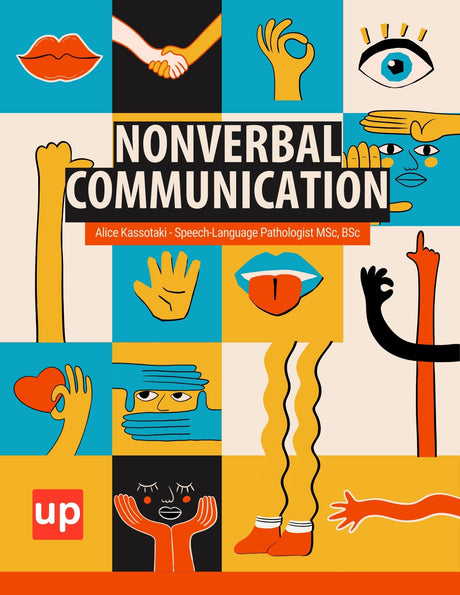Key Points
- ADHD is a neurodevelopmental condition affecting executive functions (attention, impulse control, working memory), with brain-based differences in networks involving dopamine and norepinephrine.
- The DSM-5 recognizes three presentations—Predominantly Inattentive, Predominantly Hyperactive-Impulsive, and Combined—each with distinct symptom patterns that can change across the lifespan.
- Effective management is multimodal: accurate diagnosis, medication when appropriate, behavioral and cognitive-behavioral therapies, and school/work accommodations (IEP/504 or equivalent supports).
Introduction: Beyond the Misconceptions of ADHD

ADHD affects the brain's executive functions, the core mental skills responsible for managing tasks, thoughts, and actions.
Attention-Deficit/Hyperactivity Disorder is often reduced to a simple caricature: a young child, full of energy, unable to sit still in school. While this image captures a piece of the puzzle, it overlooks the vast and varied experiences of those living with this common condition. Attention-Deficit/Hyperactivity Disorder affects the brain's executive functions. These mental skills include working memory, flexible thinking, and self-control. This deficit is not a matter of willpower but of brain-based differences that impact the ability to regulate attention, behavior, and emotions, profoundly affecting an individual's quality of life.
ADHD is not a one-size-fits-all diagnosis. It manifests in distinct ways, each with its own set of challenges and behaviors. This guide will demystify the three official presentations of ADHD as recognized by the Diagnostic and Statistical Manual of Mental Disorders (DSM-5): Predominantly Inattentive, Predominantly Hyperactive-Impulsive, and Combined. Understanding these nuances is the first critical step toward effective support, tailored management, and empowering individuals to thrive.
ADHD as a Brain-Based, or Neurodevelopmental, Disorder
To truly understand ADHD, we must recognize it as a brain-based, or neurodevelopmental, disorder. This means it originates in childhood and is rooted in the structure and function of the brain. This is not a behavioral choice but a complex brain-based problem. Research from institutions like the National Institute of Mental Health (NIMH) points to differences in brain regions like the prefrontal cortex, which is critical for planning, decision-making, and moderating social behavior.
The core of the issue often lies with the brain’s communication network. Neurotransmitter systems, especially those involving the brain chemical dopamine and norepinephrine, play a big role in causing ADHD symptoms. These chemicals are essential for maintaining alertness, managing rewards, and sustaining brain focus. Variations in brain metabolism and chemical signaling can disrupt these processes, making it harder for individuals to regulate their attention and impulses. Acknowledging ADHD's biological basis is crucial for replacing judgment with effective, compassionate support.
Key Risk Factors for Developing ADHD
While the exact cause remains unknown, science has identified several key risk factors. The most significant factor is genetics; ADHD runs strongly in families. A child with a parent who has ADHD has a greater than 50% chance of developing it as well, according to Children and Adults with Attention-Deficit/Hyperactivity Disorder (CHADD).
Other contributing factors are primarily environmental and occur during pregnancy or shortly after birth. These can include:
- Prenatal exposure to substances, including Cigarette smoking and alcohol.
- Premature delivery.
- Significantly low birth weight.
- Exposure to environmental toxins like lead at a young age.
It is vital to distinguish these scientifically supported risk factors from debunked myths. Poor parenting, excessive sugar intake, or too much screen time do not cause ADHD, although these factors can sometimes worsen symptoms.
Type 1: Predominantly Inattentive Presentation (ADHD-PI)

People often wrongly call it "ADD." The Predominantly Inattentive Presentation means a person has a hard time focusing, paying attention, and staying organized. This presentation of attention deficit disorder is characterized by a significant struggle to maintain focus and follow through on tasks. Because individuals with this type are not typically disruptive, their internal battles with attention can go unnoticed for years, particularly in girls who may be socialized to be less outwardly expressive.
Core Symptoms of Inattention (DSM-5 Criteria)
To be diagnosed with this presentation, an individual under 17 must exhibit at least six of the following common symptoms for at least six months in a way that is inconsistent with their developmental level. For those 17 and older, five symptoms are required.
- Overlooks or misses details, making careless mistakes in schoolwork or other activities.
- Has difficulty sustaining attention during tasks or play, resulting in a short attention span.
- Appears not to listen when spoken to directly, as if their mind is elsewhere.
- Fails to follow through on instructions, chores, or assignments, often starting tasks but quickly losing focus.
- Struggles with organizational skills, leading to messy work, poor time management, and missed deadlines.
- Avoids, dislikes, or is reluctant to do tasks that require sustained mental effort.
- Loses necessary items like keys, wallets, homework, or school supplies.
- Is easily distracted by unrelated thoughts or external stimuli.
- Is forgetful in daily activities, such as paying bills or keeping appointments.
How Inattentive ADHD Presents in Different Age Groups
The manifestation of inattentive ADHD evolves with age. In young children, it often presents as daydreaming. They might be quiet and compliant in the classroom but are internally distracted, missing crucial lesson details and demonstrating a much shorter span for age than their peers. This can lead to poor study skills and challenges with multi-step instructions, which impacts how a child functions academically and at home.
As they enter adolescence and adulthood, these challenges can morph into chronic procrastination, difficulty meeting deadlines at work, and feeling constantly overwhelmed by household management. The struggle to initiate and complete mundane but necessary tasks becomes a central theme, often leading to feelings of inadequacy.
Common Misconceptions and Why This Type is Often Missed
The primary misconception is that these behaviors stem from laziness, indifference, or a lack of intelligence. Parents of children with this type may become frustrated, asking, "Why can't you just focus?" The reality is that the individual is expending immense mental energy just to keep up. Because the symptoms are less externalized, this ADHD type is frequently misdiagnosed or missed entirely. This can lead to a delayed diagnosis, years of unwarranted self-blame, and significant underachievement. For these individuals, engaging in structured quiet activities like building models or drawing can sometimes help channel focus in a low-pressure environment.
Type 2: Predominantly Hyperactive-Impulsive Presentation (ADHD-HI)

This is the presentation most people associate with the classic stereotype of ADHD. It is defined by near-constant movement, restlessness, and a tendency to be hyperactive and impulsive, acting on urges without fully considering the consequences. These behaviors are often disruptive and more easily identified by parents and teachers, which typically leads to an earlier diagnosis than the inattentive type.
Core Symptoms of Hyperactivity and Impulsivity (DSM-5 Criteria)
A diagnosis requires at least six of the following symptoms (five for adults) that persist for at least six months and cause impairment:
Hyperactivity:
- Fidgets with or taps hands or feet, or squirms in their seat.
- Leaves their seat in situations where remaining seated is expected.
- Runs or climbs in situations where it is inappropriate.
- Is unable to play or engage in leisure activities quietly.
- Is constantly "on the go," acting as if "driven by a motor."
- Talks excessively.
Impulsivity:
- Blurts out an answer before a question has been completed.
- Has difficulty waiting their turn.
- Interrupts or intrudes on others' conversations, games, or activities.
How Hyperactive-Impulsive ADHD Presents Across the Lifespan
In a young child, hyperactivity is often physical and obvious—running, jumping, and climbing at inappropriate times. This constant motion can be exhausting for caregivers and disruptive in structured settings like school or daycare. As individuals age, the overt physical hyperactivity may lessen, transforming into an inner feeling of restlessness. An adult may not be running around the office, but they might be constantly tapping their foot, fidgeting with a pen, or feeling a persistent need to stay busy. Impulsivity can manifest as making rash career decisions, overspending, or struggling with patience in relationships.
Challenges and Risks Associated with Hyperactive-Impulsive Behaviors
The challenges are often social and behavioral. The constant interruptions and inability to wait their turn can make it difficult for a child to form and maintain friendships, as their behavior can be misinterpreted as rude or selfish. Their poor social judgment and impulsive actions may lead to accidental injuries or disciplinary issues at school. For adults, impulsivity can strain relationships and create financial or professional instability. Learning social cues through structured social games or group therapy can be a beneficial strategy for developing better interaction skills.
Type 3: Combined Presentation (ADHD-C): The Most Common Form
 As the name says, a person with a Combined Presentation meets the symptom criteria for both Inattentive and Hyperactive-Impulsive types. To be diagnosed with the combined type, an individual must exhibit at least six symptoms from the inattentive list and six from the hyperactive-impulsive list (five of each for adults). This is the most common presentation of ADHD diagnosed across all age groups.
As the name says, a person with a Combined Presentation meets the symptom criteria for both Inattentive and Hyperactive-Impulsive types. To be diagnosed with the combined type, an individual must exhibit at least six symptoms from the inattentive list and six from the hyperactive-impulsive list (five of each for adults). This is the most common presentation of ADHD diagnosed across all age groups.
Blending the Symptoms: A Mix of Both Inattention and Hyperactivity-Impulsivity
A person with Combined ADHD experiences a significant deficit in both attention regulation and impulse control. For example, a student may struggle to follow the teacher’s instructions (inattention) while simultaneously being unable to stop blurting out answers (impulsivity). They are dealing with both an internal world of distraction and an external drive for constant activity. The major symptoms from both categories are present and cause significant impairment.
Understanding the Complexity of Combined ADHD
The experience of Combined ADHD can feel like a constant internal battle. The brain that struggles to organize a multi-step project is the same brain that compels the body to get up and move. The balance of symptoms can vary from person to person and may even shift in the same individual depending on the environment, stress level, or time of day. This complexity makes it essential to have a comprehensive and flexible management plan.
Why This Presentation Can Be Particularly Challenging
Combined ADHD presents a dual challenge. Inattentive symptoms can cause problems with school and organization. Hyperactive-impulsive behaviors can lead to social and disciplinary issues. This combination often results in significant impairment across multiple areas of life—at home, in school, and in social settings. Because they face hurdles from both symptom sets, individuals with the combined type often require a more intensive and multifaceted support system to navigate their daily lives successfully.
Diagnosis and Evaluation: Identifying ADHD and Its Presentation
A proper ADHD diagnosis is a thorough process conducted by a qualified healthcare provider, such as a pediatrician, psychiatrist, psychologist, or clinical social worker. It is not based on a single test but on a comprehensive evaluation of behaviors, symptoms, and life history.
The Role of Mental Health Professionals and a Comprehensive Assessment
A child psychiatrist or another qualified mental health expert will conduct a detailed evaluation. The process of mental health testing typically involves:
- In-depth interviews with the individual and/or their parents or caregivers.
- Standardized rating scales and questionnaires completed by parents, teachers, and the individual to assess behaviors across different settings.
- A review of academic, medical, and family history.
- Screening for other conditions that can co-occur or have similar symptoms, such as anxiety, depression, or learning disabilities.
Differentiating ADHD from Normal Development for Age
A key task for the clinician is to determine if the observed behaviors are beyond what is typical for a person's developmental stage. All children can be inattentive or hyperactive at times. The difference with ADHD is that these behaviors are persistent, severe, and negatively impact normal development, academic achievement, and social functioning. The symptoms are more frequent and intense than what is expected for a child of that age.
The Importance of Accurate Diagnosis for Tailored Support
Receiving an accurate diagnosis—and identifying the specific presentation—is the foundation for effective treatment. A support plan for a child with Predominantly Inattentive ADHD will focus more on organizational strategies and attention-building skills, while a plan for a child with the Hyperactive-Impulsive type may prioritize behavioral therapies to manage impulsivity. The correct diagnosis provides the roadmap needed to create a tailored strategy for success.
Managing ADHD: Treatment and Support Strategies for Each Type
There is no cure for ADHD, but it is a highly manageable condition. Effective treatment usually uses several methods. It addresses biological, psychological, and social factors. This multi-pronged approach is considered the gold standard for care.
A Multifaceted Approach: Medication and Therapy
For many, medication is a cornerstone of treatment. Many people find that stimulant or non-stimulant medications work well to reduce the main symptoms of inattention and hyperactivity. Non-stimulant medicines, in particular, can be a good option for those who do not respond well to stimulants.
Alongside medication, therapy is crucial. Behavior therapy includes parent training and cognitive behavioral therapy (CBT). These therapies give individuals and families practical ways to manage difficult behaviors, improve organization, and build coping skills. Behavior management training equips individuals with practical behavior management skills. For children, this often involves training for parents, where caregivers learn strategies to encourage positive behavior. Training in behavior management and self-management training also helps older children and adults learn to recognize and control their own behaviors, tailored to their specific skills for age.
The Role of School and Community Support Systems
A comprehensive care team is vital. This team often includes the primary healthcare provider, a therapist, parents, the individual, and school staff. At school, school psychologists and school counselors play a key role in developing educational treatment plans, such as an Individualized Education Program (IEP) or a 504 Plan. These plans provide formal accommodations, and effective training at school for teachers can make a significant difference.
Beyond the school, community services and education programs can offer additional support. Consistent communication with the care team, including a plan for contacting a provider after office hours in a crisis and scheduling a regular follow-up appointment, is essential for ongoing success. The skills for parents can learn through these programs are invaluable for creating a supportive home environment.
Conclusion: Empowering Understanding and Action
As this guide has explained, the three official types of ADHD recognized by the DSM-5 are Predominantly Inattentive, Predominantly Hyperactive-Impulsive, and Combined. Attention-Deficit/Hyperactivity Disorder is far more complex than the stereotypes suggest, with each presentation describing a unique set of challenges that require tailored understanding and support. Recognizing the specific symptoms, whether it's the quiet struggle of inattention or the overt restlessness of hyperactivity, is the first step toward compassion and effective action.
If you recognize these patterns in yourself or a loved one, the most important next step is to seek a comprehensive evaluation from a qualified professional. An accurate diagnosis gives more than a label. It provides answers to long-standing questions. It also opens the way to strategies and treatments that help manage challenges and show a person's unique strengths. With the right knowledge and support, individuals with ADHD can navigate their challenges and lead fulfilling, successful lives.
Frequently Asked Questions (FAQ)
What are the three types of ADHD?
The DSM-5 identifies Predominantly Inattentive (difficulties with focus, organization, follow-through), Predominantly Hyperactive-Impulsive (restlessness, excessive talking, impulsive actions), and Combined Presentation (criteria met for both domains).
How is ADHD different from normal distractibility or high energy?
All people can be inattentive or energetic at times. ADHD symptoms are more frequent, persistent (≥6 months), developmentally inappropriate, and cause impairment at school, work, or in relationships.
Can adults have ADHD, or is it just a childhood condition?
ADHD is a lifespan condition. Some hyperactive behaviors may diminish with age, but challenges with attention, organization, and impulsivity can persist into adulthood without support.
How is ADHD diagnosed?
A qualified clinician conducts a comprehensive assessment: clinical interviews, rating scales from multiple settings, developmental/medical history, and screening for co-occurring conditions (e.g., anxiety, learning disorders). There is no single lab test for ADHD.
What causes ADHD?
ADHD has a strong genetic component and is linked to brain-based differences in networks supporting attention and self-regulation. Prenatal exposures, prematurity, low birth weight, and early lead exposure are associated risk factors. Parenting style or sugar intake do not cause ADHD.
What are common signs of the inattentive type?
Frequent careless mistakes, difficulty sustaining attention, seeming not to listen, poor follow-through, disorganization, avoidance of sustained effort, losing items, distractibility, and forgetfulness.
What are common signs of the hyperactive-impulsive type?
Fidgeting, leaving seat when expected to stay, inappropriate running/climbing in children, difficulty playing quietly, being “on the go,” excessive talking, blurting answers, difficulty waiting, and interrupting.
What is the Combined Presentation?
It means the individual meets symptom thresholds for both inattentive and hyperactive-impulsive domains, often leading to broader challenges across school/work and social settings.
What treatments are effective?
Evidence-based care typically includes stimulant or non-stimulant medication, behavioral parent training, CBT/skills training for organization and emotion regulation, and environmental supports (structured routines, reminders, task chunking).
What supports are available at school or work?
Students may qualify for an Individualized Education Program (IEP) or 504 Plan with accommodations such as extended time, preferential seating, and organizational aids. Adults can request reasonable workplace accommodations (clear deadlines, written instructions, reduced distractions).
When should someone seek a professional evaluation?
If symptoms are persistent, begin in childhood (or clearly trace back), and cause meaningful difficulties in learning, job performance, or relationships, an evaluation by a pediatrician, psychiatrist, psychologist, or other qualified clinician is recommended.
Original content from the Upbility writing team. Reproducing this article, in whole or in part, without credit to the publisher is prohibited.
References
- American Psychiatric Association. Diagnostic and Statistical Manual of Mental Disorders (5th ed., text rev.).
- National Institute of Mental Health (NIMH). Attention-Deficit/Hyperactivity Disorder.
- CHADD (Children and Adults with ADHD). ADHD: Overview, Diagnosis, and Treatment.
- CDC. Data & Statistics on ADHD; Treatment Recommendations.
- Wolraich, M. et al. (2019). Clinical Practice Guideline for the Diagnosis, Evaluation, and Treatment of ADHD in Children and Adolescents. Pediatrics.









